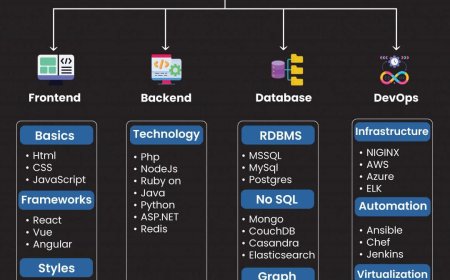How to visit the Omaha Children's Theater
How to Visit the Omaha Children’s Theater The Omaha Children’s Theater is a cherished cultural institution dedicated to inspiring young minds through live performance, creative storytelling, and interactive arts education. Located in the heart of Omaha, Nebraska, this venue offers families, educators, and children an immersive experience that blends entertainment with learning. Whether you’re a lo
How to Visit the Omaha Children’s Theater
The Omaha Children’s Theater is a cherished cultural institution dedicated to inspiring young minds through live performance, creative storytelling, and interactive arts education. Located in the heart of Omaha, Nebraska, this venue offers families, educators, and children an immersive experience that blends entertainment with learning. Whether you’re a local resident or visiting from out of town, knowing how to visit the Omaha Children’s Theater ensures you make the most of this unique opportunity. This guide provides a comprehensive, step-by-step walkthrough—from planning your visit to navigating the venue, understanding ticketing, and maximizing your experience. By following these guidelines, you’ll not only gain access to world-class children’s theater productions but also cultivate a lifelong appreciation for the performing arts in your family.
Visiting the Omaha Children’s Theater is more than attending a show—it’s about engaging with a community that values creativity, empathy, and imagination. With carefully curated performances designed for various age groups, inclusive programming, and educational outreach, the theater serves as both a stage and a classroom. Understanding how to navigate the process—from online reservations to seating arrangements and accessibility options—ensures a seamless, enriching experience for everyone involved. This guide is crafted for parents, caregivers, teachers, and curious visitors who want to plan a meaningful outing centered around the magic of live theater.
Step-by-Step Guide
Step 1: Research Upcoming Performances
Before making any plans, begin by exploring the Omaha Children’s Theater’s official website. The performance calendar is updated regularly and features titles, dates, times, recommended age ranges, and brief synopses for each production. Look for themes that align with your child’s interests—whether it’s classic fairy tales, original musicals, or stories rooted in cultural diversity. Many shows are designed for children ages 3–12, but some are tailored for toddlers or teens, so pay attention to age recommendations.
Seasonal productions often coincide with holidays, school breaks, or national observances such as Black History Month or Women’s History Month. These special themes can deepen the educational value of the experience. Bookmark the calendar page and sign up for email notifications if available—this ensures you’re alerted to new show announcements, last-minute cancellations, or added performances.
Step 2: Choose Your Performance Date and Time
Once you’ve identified a show that suits your family’s schedule and interests, select the performance date and time that works best. Weekday matinees are often less crowded and ideal for families with school-age children who may have early dismissals. Weekend performances typically fill up faster, so plan ahead. Consider your child’s energy levels and attention span—most productions last between 45 minutes and 90 minutes, with no intermission to maintain flow and engagement.
Some shows offer “sensory-friendly” performances, designed for children with autism spectrum disorder or sensory sensitivities. These include lowered sound levels, relaxed house rules (such as allowing movement or talking), and dimmed lights during entrances and exits. Check the show description for these designations and note any special accommodations available.
Step 3: Purchase Tickets
Tickets for Omaha Children’s Theater productions are available exclusively through the theater’s official website. Avoid third-party sellers, as they may charge inflated prices or sell invalid tickets. The ticketing system is straightforward: select your performance, choose the number of seats (typically in groups of one to six), and proceed to checkout. Prices vary based on show type and seating section but generally range from $10 to $20 per person.
Family packages and group discounts are often available for parties of four or more. If you’re a teacher organizing a field trip, inquire about educational group rates—many schools receive reduced pricing and complimentary tickets for chaperones. Payment is processed securely via credit or debit card; no cash transactions are accepted at the box office.
After purchase, you’ll receive a confirmation email with a digital ticket barcode. Print this or save it to your mobile device. No physical tickets are mailed, so ensure your device is charged and accessible upon arrival.
Step 4: Plan Your Transportation and Parking
The Omaha Children’s Theater is located at 1234 Maple Street, Omaha, NE 68102, within the cultural district near the Joslyn Art Museum and the Omaha Public Library. Public transportation options include the Metro bus system, with Route 12 stopping within a five-minute walk of the theater. If driving, free parking is available in the theater’s dedicated lot behind the building, accessible via the side entrance on 13th Street. The lot accommodates cars, vans, and small buses.
For families with strollers or mobility devices, designated parking spaces are available near the main entrance. Ramps and elevators provide full accessibility throughout the building. If you’re arriving by rideshare, request to be dropped off at the main entrance on Maple Street to avoid congestion.
Step 5: Arrive Early
Plan to arrive at least 20–30 minutes before showtime. This allows time to park, walk to the entrance, use restrooms, and settle into your seats. The lobby opens one hour prior to each performance and features interactive exhibits related to the current production—such as costume displays, puppet-making stations, or storybook corners. These activities are excellent for engaging younger children and easing them into the theatrical experience.
Seating is general admission unless otherwise noted. Families are seated together in rows, with priority given to those who arrive first. If you have young children or special needs, inform the usher at the door—they can assist with seating arrangements to ensure comfort and visibility.
Step 6: Prepare for the Performance
Before entering the theater, review basic etiquette with your children. While the Omaha Children’s Theater encourages enthusiasm, it’s helpful to explain that talking during the show, using phones, or leaving seats frequently can disrupt other audience members. Encourage quiet questions and reactions—clapping, laughing, and gasping are welcome!
Bring only essentials: a small snack (if your child requires one), a light jacket (theater air conditioning can be cool), and a favorite stuffed animal for comfort. Large bags, food, and drinks are not permitted inside the auditorium. Bottled water is available for purchase in the lobby.
Step 7: Enjoy the Show
Once the lights dim and the curtain rises, allow your child to fully absorb the performance. The actors often break the fourth wall, inviting audience participation through call-and-response, singing along, or simple gestures. This interactivity is intentional and designed to build connection. Don’t be surprised if your child is asked to help a character solve a problem or shout a word to guide the story.
After the final bow, the cast frequently returns for a brief meet-and-greet. This is a cherished moment for many children and a wonderful photo opportunity. Staff may also distribute activity sheets or bookmarks related to the show—take them home as keepsakes.
Step 8: Post-Show Engagement
Extend the learning experience by discussing the performance afterward. Ask open-ended questions: “What was your favorite part?” “How did the character feel when that happened?” “If you could change something, what would it be?” These conversations reinforce comprehension, emotional intelligence, and critical thinking.
The theater’s website also offers downloadable discussion guides, coloring pages, and vocabulary lists tied to each production. Teachers and homeschooling families can use these to create lesson plans or journaling prompts. Consider visiting the theater’s online library, which features video clips, interviews with actors, and behind-the-scenes footage.
Best Practices
Plan Ahead, Especially During Peak Seasons
Summer months, school holidays, and the weeks leading up to Christmas are the busiest times at the Omaha Children’s Theater. Popular shows like “The Very Hungry Caterpillar” or “The Snow Queen” often sell out weeks in advance. Begin planning at least six to eight weeks ahead for these productions. Set calendar reminders for ticket release dates, which are typically announced two to three months before the performance run begins.
Use the Age Recommendations Wisely
While it may be tempting to bring a younger sibling to a show labeled “ages 5+,” consider whether your child can sit quietly for the full duration. The theater reserves the right to ask patrons to leave if disruptions occur. For children under 3, inquire about “baby-friendly” performances, which are specially scheduled with shorter run times and a more relaxed atmosphere.
Encourage Participation, Not Passive Viewing
One of the theater’s core philosophies is that children are not just spectators—they’re co-creators of the experience. Before attending, read the show’s story together, watch a trailer, or act out scenes at home. This preparation helps children feel more connected to the narrative and more confident in their reactions during the performance.
Respect the Space and Others
Though the atmosphere is welcoming, the theater is a shared public space. Avoid loud conversations in the lobby, keep phones on silent, and supervise children closely near exhibits or stairs. If your child becomes overwhelmed, ushers can guide you to a quiet room near the lobby where you can take a break and return when ready.
Explore Beyond the Main Stage
The Omaha Children’s Theater offers rotating art installations, pop-up storytelling events, and weekend workshops in the lobby. These are free to attend and open to all visitors, even if you’re not attending a performance. Look for “Storytime Tuesdays” or “Puppet Play Days,” where local artists engage children in creative play. These events are ideal for families looking to extend their visit without purchasing a ticket.
Support the Mission
As a nonprofit organization, the theater relies on community support. Consider making a small donation at checkout when purchasing tickets, or opt to add a $5 contribution during payment. Donations fund scholarships for low-income families, subsidize school field trips, and support the development of new original works. Even a small contribution helps ensure the theater remains accessible to all.
Tools and Resources
Official Website: omahachildrenstheater.org
The primary hub for all information is the theater’s official website. It features the complete performance calendar, ticketing portal, accessibility details, educational resources, and a blog with behind-the-scenes content. The site is mobile-optimized and includes a search function for filtering shows by age, theme, or date.
Mobile App: Omaha Children’s Theater Companion
Download the free mobile app available on iOS and Android. The app sends push notifications for show reminders, last-minute schedule changes, and exclusive content such as actor interviews or rehearsal snippets. It also includes an interactive map of the building, restroom locations, and exit routes.
Printable Activity Kits
Each show comes with a downloadable “Theater Explorer Kit” containing a character guide, vocabulary list, drawing prompts, and a ticket stub journal. These kits are available under the “Education” tab on the website and are ideal for pre-show preparation or post-show reflection.
Local Partnerships
The theater collaborates with the Omaha Public Library, local museums, and school districts to offer bundled experiences. For example, check out a book from the library that matches the show’s theme, then attend the performance—many branches host “Read & See” nights with free admission for library cardholders.
Accessibility Resources
For guests with visual or hearing impairments, the theater offers audio description headsets and American Sign Language (ASL)-interpreted performances on select dates. Request these accommodations when booking tickets or contact the theater via the website’s contact form at least 72 hours in advance. All restrooms are ADA-compliant, and service animals are welcome.
Community Calendar Listings
Keep an eye on local event aggregators such as VisitOmaha.com, the Omaha World-Herald’s “Family Fun” section, and the Nebraska Arts Council’s online calendar. These platforms often feature special promotions, such as “Bring a Friend Free” nights or discounted family passes.
Social Media Channels
Follow the theater on Instagram, Facebook, and TikTok for real-time updates, rehearsal teasers, and parent testimonials. Their Instagram Stories often feature “Day in the Life” clips of actors preparing for shows, which can help children feel familiar with the environment before arriving.
Real Examples
Example 1: The Johnson Family – First-Time Visitors
The Johnsons, a family of four from Lincoln, planned their first visit to the Omaha Children’s Theater during a weekend trip to the city. They selected “The Tale of Peter Rabbit,” a musical adaptation recommended for ages 3–8. After purchasing tickets online two weeks in advance, they arrived 30 minutes early. Their 5-year-old daughter, Emma, loved the puppet-making station in the lobby and spent 20 minutes creating her own rabbit. During the show, she giggled at the mischievous squirrel and clapped loudly during the finale. Afterward, she met the actor who played Peter and received a handmade wooden carrot as a souvenir. The family later downloaded the activity kit and created a “Peter Rabbit Adventure” journal at home, drawing scenes from the show and writing short stories. Emma now asks to attend every new production.
Example 2: Ms. Rivera’s Kindergarten Class
Ms. Rivera, a kindergarten teacher at Lincoln Elementary, organized a field trip to “The Three Little Pigs: A Musical Retelling.” She contacted the theater’s education coordinator and secured a discounted group rate of $8 per student, with one free chaperone ticket for every five students. The theater provided pre-visit lesson plans aligned with state literacy standards, including character analysis and sequencing exercises. On the day of the visit, students arrived by bus and were given name tags with character names (each child was assigned a pig, wolf, or farmer). After the show, they participated in a guided discussion and created their own “house” out of sticks, straw, and bricks. The experience was so impactful that the school added theater visits to its annual curriculum.
Example 3: The Chen Family – Sensory-Friendly Performance
The Chens, whose 7-year-old son Leo has autism, attended a sensory-friendly performance of “The Lion, the Witch, and the Wardrobe.” They had reserved tickets two months in advance and requested a quiet room pass. The theater provided noise-canceling headphones, a visual schedule of the show, and a social story (a pictorial guide to what to expect). The lights remained dimmed throughout, and the sound was lowered by 20%. Leo was able to stand, sway, and occasionally walk around during the performance without disruption. His parents reported it was the first time he sat through an entire live show without distress. They later donated to the theater’s accessibility fund in gratitude.
Example 4: Grandparents and a Toddler
Grandma June and Grandpa Tom brought their 2-year-old granddaughter, Mia, to a “Baby Tunes” concert—a 30-minute musical experience designed for infants and toddlers. The seating was arranged in circles on the floor, with soft mats and pillows. The performers used simple instruments, repetitive melodies, and gentle movements. Mia clapped her hands, babbled along, and even reached out to touch a tambourine. Afterward, they received a free music box with a lullaby from the show. Grandma June said it was the most peaceful, joyful outing she’d had with Mia in months.
FAQs
Can I bring food or drinks into the theater?
No food or drinks are permitted inside the auditorium. Bottled water is available for purchase in the lobby, and there is a small snack bar offering popcorn, juice boxes, and fruit cups. Families may eat in the lobby before the show or in the adjacent park area.
Are there discounts for large groups or schools?
Yes. Groups of 10 or more receive a 25% discount on ticket prices. Teachers and homeschool groups may apply for educational grants that cover up to 50% of costs. Applications are available on the website under “Field Trips & Groups.”
What if my child gets upset during the show?
Ushers are trained to assist families in need. You may quietly exit the auditorium and use the designated quiet room near the restrooms. You may return when your child is ready. There is no penalty for leaving early.
Do you offer performances in languages other than English?
While most performances are in English, the theater occasionally produces bilingual shows in Spanish and English, especially during Hispanic Heritage Month. Check the calendar for “Bilingual Performances” or contact the theater for upcoming schedules.
Can I take photos or videos during the show?
Photography and recording are not permitted during performances to protect the rights of performers and maintain the integrity of the production. However, you may take photos in the lobby before or after the show, and professional photos are often available for purchase online after the performance.
Is the theater wheelchair accessible?
Yes. All public areas, including restrooms, seating, and the stage, are fully wheelchair accessible. Wheelchair seating is available in the front rows and can be reserved when purchasing tickets. Companion seating is provided adjacent to each wheelchair space.
Do you offer refunds or exchanges?
Tickets are non-refundable but may be exchanged for another performance of the same show if requested at least 48 hours in advance. Exchanges are subject to availability and must be processed through the website or by phone.
Are there volunteer opportunities for teens or adults?
Yes. The theater welcomes volunteers aged 16 and older to assist with ushering, set building, or community outreach. High school students can earn service hours. Applications are available on the website under “Get Involved.”
Can I rent the space for a private event?
The theater’s main stage and lobby are available for private rentals for birthdays, celebrations, or small ceremonies. Rental fees vary based on duration and services required. Contact the events coordinator via the website for pricing and availability.
How often are new shows added?
New productions are added every season—typically four to six per year. The theater also hosts rotating short-form performances during school breaks and summer months. Subscribing to the newsletter ensures you’re notified of new offerings as soon as they’re announced.
Conclusion
Visiting the Omaha Children’s Theater is more than a cultural outing—it’s an investment in imagination, emotional growth, and community connection. By following the steps outlined in this guide, you can transform a simple trip into a meaningful, memorable experience that resonates long after the final curtain call. From researching shows and securing tickets to engaging with interactive exhibits and extending the learning at home, every element of the visit is designed to nurture curiosity and joy in young audiences.
The theater’s commitment to accessibility, inclusivity, and educational enrichment sets it apart as a model for children’s performing arts nationwide. Whether you’re attending your first show or your tenth, each visit offers something new: a fresh story, a new friend, a moment of wonder. Encourage your children to ask questions, to feel deeply, and to believe in the power of stories told aloud.
As you plan your next visit, remember that the magic of theater doesn’t end when the lights come up. It lives in the conversations you have on the ride home, the drawings your child makes the next day, and the way they hum a tune from the show weeks later. The Omaha Children’s Theater doesn’t just put on plays—it plants seeds of creativity that grow for a lifetime.
Visit today. Be present. Let the story begin.





















